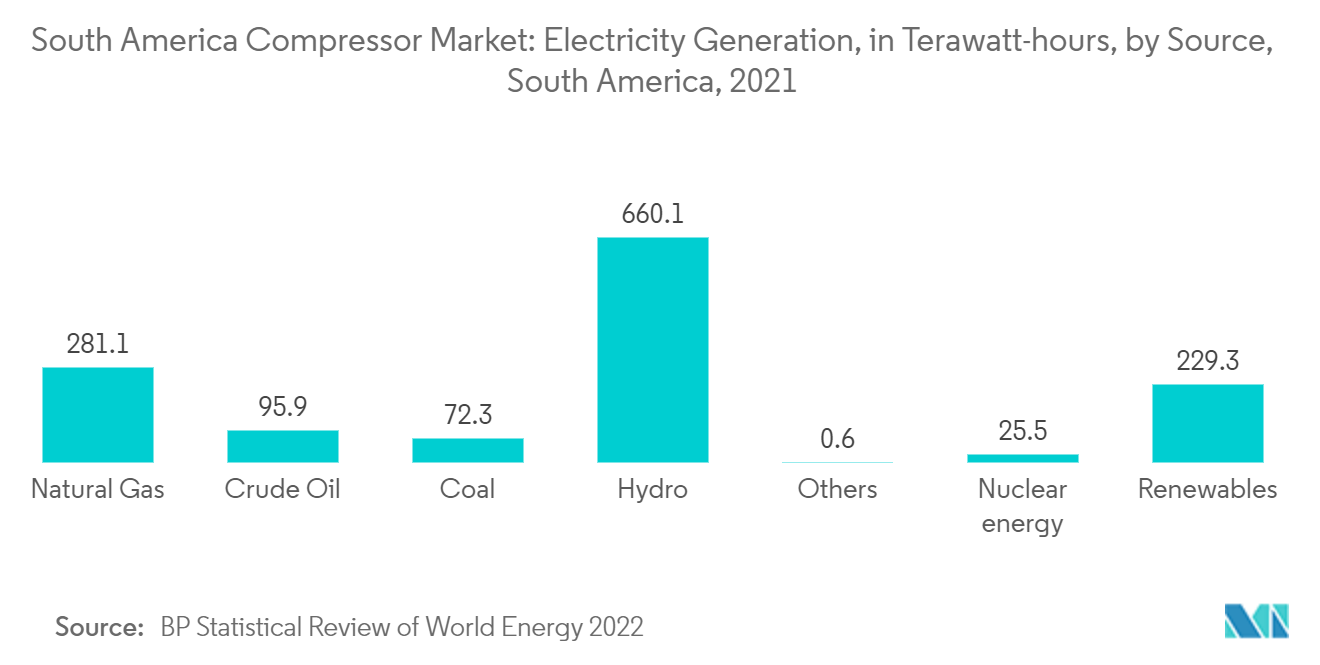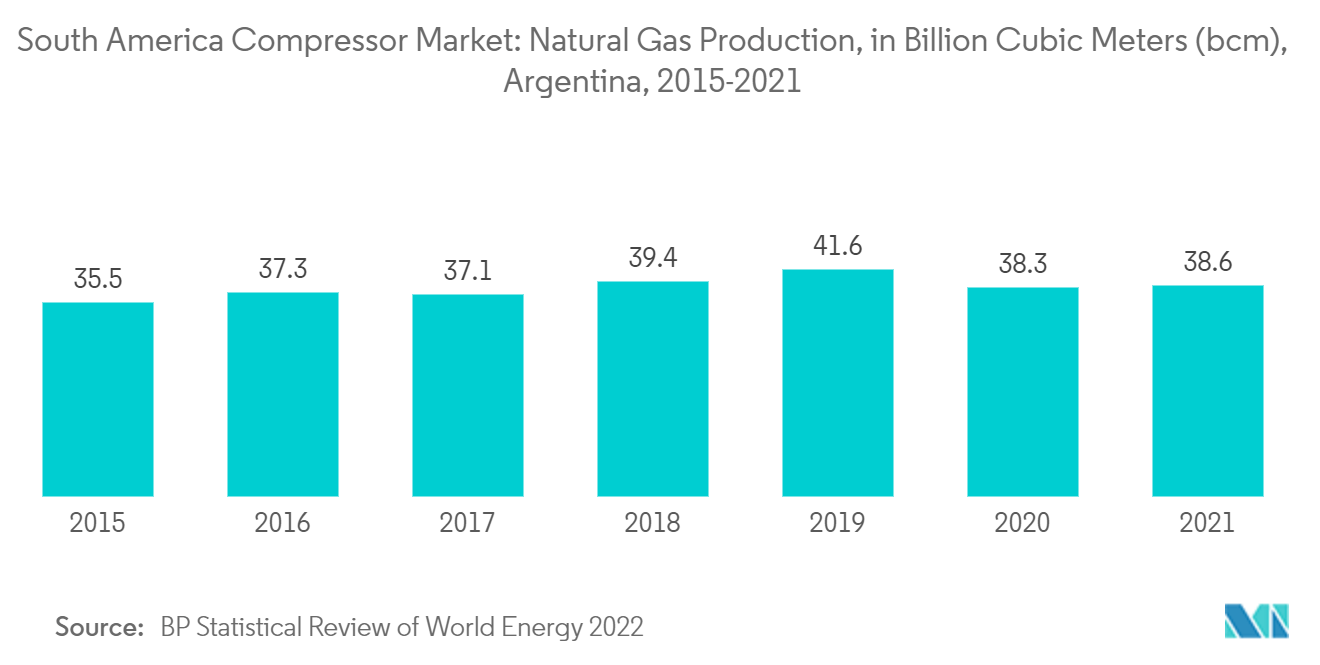Market Trends of South America Compressor Industry
Oil and Gas Industry Segment Expected to Dominate the Market
- Compressors are mechanical devices that increase the pressure of a gas by reducing its volume. They are widely used throughout the oil and gas industry. The upstream, midstream, and downstream sectors of the oil and gas business require compression for numerous applications, such as transmission, storage, gas gathering, gas lift, gas injection, flash gas compression, and refrigeration.
- Moreover, discoveries of gas reservoirs in the region are likely going to use the compressor as an integral part of the gas transportation infrastructure. Hence, the expanding gas pipeline networks are expected to be one of the most significant drivers for the growth of the market studied during the forecast period.
- In 2021, the total electricity generated in South America, approximately 20.4%, was from natural gas in the region. As the energy generation source, natural gas comes second after hydropower in the region, which is 2021 accounted for approximately 660.1 TWh of the energy in the area.
- The 1430-km long proposed Brazil-Argentina pipeline will allow production from the Vaca Muerte shale to connect to Neuquen province in Brazil. Negotiations over the project started in August 2021, and the estimated cost of the project is USD 4.9 billion.
- Gasoducto del Noreste (GNEA) is another major upcoming gas pipeline in Argentina. GNEA is a pipeline (1,500km long) that is being constructed to transport gas from Bolivia to different areas in Argentina. The government is also focusing on the development of the gas transportation infrastructure in the country, along with the development of this GNEA project.
- Hence, owing to the above points, the oil and gas industry segment is likely going to dominate the South American compressor market during the forecast period.

Argentina Expected to be the Fastest Growing Market
- Argentina, due to the constant increase in energy demand and an increasing number of commercial and industrial operations, the country is likely to be the fastest-growing market for compressors in South America. Moreover, the growth in the share of natural gas in power generation in the country is likely to drive the compressor market.
- The production of shale gas in the country will increase by about 90% in 2021. This is expected to provide new avenues for the companies engaged in the compressor business.
- In 2021, the production of gas in Argentina was 38.6 billion cubic meters (bcm), which was higher than the production in 2020, 38.3 bcm. The increasing usage of gas in the country to generate electricity is likely to drive the compressor market in various sectors such as power generation, refineries, etc.
- GasoductodelNoreste (GNEA) is another major upcoming gas pipeline in Argentina. GNEA is a pipeline (1,500km long) that is being constructed to transport gas from Bolivia to different areas in Argentina. The government is also focusing on the development of the gas transportation infrastructure in the country, along with the development of this GNEA project.
- Hence, owing to the above points, Argentina is expected to be the fastest-growing market for compressors in South America during the forecast period.


